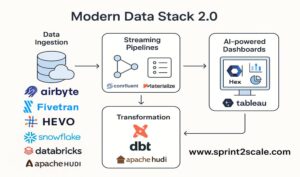Introduction
In the fast-paced world of Agile development, sprints are the heartbeat of productivity. They provide a structured framework for teams to plan, execute, and deliver increments of valuable software. However, the real world is often unpredictable, and despite meticulous planning, unplanned work can disrupt even the most well-crafted sprint. In this comprehensive guide, we will delve into the intricacies of Managing Unplanned Work in a Sprint, exploring strategies, best practices, and tools to navigate the challenges that arise.
I. Understanding Unplanned Work:
Before diving into strategies, it’s crucial to understand what unplanned work encompasses. Unplanned work refers to any unexpected task or issue that arises during a sprint, diverting the team’s attention from the initially planned work. This could range from urgent bug fixes and technical debt to sudden feature requests or changes in project scope. Recognizing the various forms of unplanned work is the first step towards effective management.
II. Managing Unplanned Work in a Sprint – Creating a Resilient Sprint Planning Process:
A. Prioritization Techniques:
- MoSCoW Method: Prioritize tasks into Must-haves, Should-haves, Could-haves, and Won’t-haves to ensure the team focuses on essential work first.
- Value vs. Effort Matrix: Evaluate tasks based on their value and effort required, allowing the team to prioritize high-value, low-effort items.

B. Buffer Allocation:
- Contingency Planning: Allocate a certain percentage of the sprint solely for handling unplanned work, creating a buffer without jeopardizing the primary goals.
- Slack Time: Introduce slack time within the sprint to accommodate unexpected tasks while maintaining overall productivity.
III. Agile Principles for Unplanned Work:
A. Embracing Change:
- Agile Manifesto: Analyze the Agile Manifesto’s principles and values to create a mindset that welcomes change and adapts swiftly.
- Continuous Improvement: Implement feedback loops and retrospectives to continuously improve processes and responses to unplanned work.
B. Iterative Development:
- Incremental Releases: Break down larger tasks into smaller increments, facilitating continuous delivery and minimizing the impact of unplanned work on the overall project timeline.
- Regular Inspections: Conduct regular sprint reviews to identify potential bottlenecks and areas for improvement in managing unplanned work.
IV. Reactive Strategies for Unplanned Work:

A. Incident Response Plans:
- Establishing Protocols: Develop clear protocols for handling critical issues and incidents that may arise, ensuring a rapid and coordinated response from the team.
- Escalation Paths: Define escalation paths to quickly involve the right team members when facing unexpected challenges.
B. Emergency Meetings:
- Daily Stand-ups: Enhance the frequency of daily stand-ups during periods of high unpredictability, fostering improved communication and collaboration among team members.
- Ad-hoc Huddles: Introduce ad-hoc huddles for immediate issue resolution, allowing team members to address unplanned work promptly.
V. Proactive Strategies for Unplanned Work:
A. Risk Management:
- Identification: Conduct thorough risk assessments at the beginning of each sprint, identifying potential sources of unplanned work.
- Mitigation Plans: Develop mitigation plans for identified risks, enabling the team to address potential challenges before they escalate.

B. Continuous Learning:
- Retrospectives: Use retrospectives as a tool to reflect on how unplanned work was managed in previous sprints and implement improvements for future iterations.
- Knowledge Sharing: Foster a culture of knowledge sharing within the team, ensuring that insights gained from addressing unplanned work are disseminated for collective learning.
VI. Tools for Unplanned Work Management:
A. Issue Tracking Systems:
- Jira, Trello, or Asana: Leverage robust issue tracking systems to log, prioritize, and manage unplanned work efficiently.
- Custom Workflows: Configure custom workflows within issue tracking tools to streamline the handling of unplanned tasks.
B. Collaboration Platforms:
- Slack, Microsoft Teams: Utilize real-time communication platforms to facilitate quick collaboration and information exchange among team members.
- Virtual Whiteboards: Implement virtual whiteboards for visualizing and organizing unplanned work alongside planned tasks.
VII. Case Studies: Real-world Examples of Unplanned Work Management
A. High-Impact Bugs: Explore a case study where a critical bug surfaced during a sprint and examine the strategies employed to address it without compromising project timelines.
B. Scope Changes: Analyze a scenario where a client requested significant changes to project scope mid-sprint and examine how the team adapted to meet the new requirements.
VIII. Conclusion:
In conclusion, managing unplanned work within a sprint requires a combination of proactive planning, agile principles, and effective tools. By creating a resilient sprint planning process, embracing agile principles, implementing reactive and proactive strategies, and leveraging suitable tools, teams can navigate the challenges posed by unplanned work and ensure successful sprint outcomes. Remember, in the ever-evolving landscape of software development, the ability to adapt and respond to change is as crucial as the ability to plan and execute.







No Comment! Be the first one.